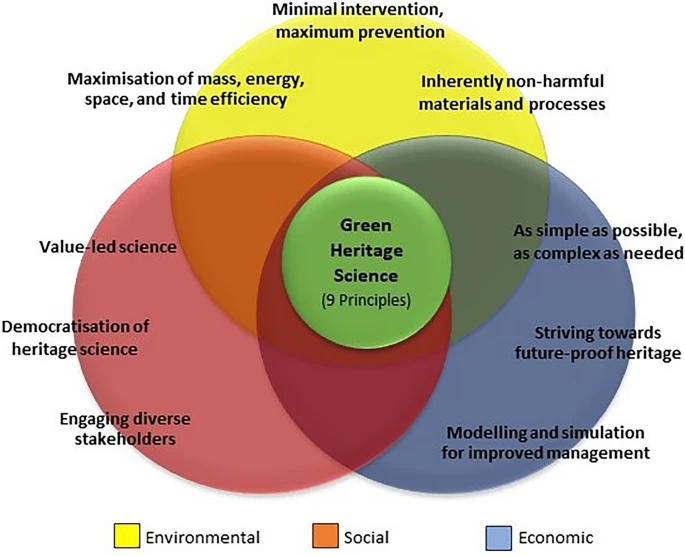As part of the research activities of the Horizon Europe GreenArt project and inspired by the EU Green Deal, the Heritage Science Lab Ljubljana has formulated and published a set of ”9 principles of green heritage science”, taking into account the complexity of the research challenges as well as environmental and socio-economic sustainability. The principles were informed by discussions within various forums as well as a number of projects at the Heritage Science Lab Ljubljana. The 9 principles will hopefully serve as a basis for further discussions on the greening of the heritage science sector and provide a set of recommendations to guide the heritage science sector towards greener and more sustainable practices and quantitated impacts.
Clearly, the proposed principles require a wider debate among heritage scientists and other stakeholders through conferences, workshops, and participatory research. The principles suggested here are intended to provide the basis for a practical and adaptable tool for scientists and stakeholders to engage in a meaningful and informed dialogue about green and sustainable heritage science, and in the fullness of time, develop indicators and quantitative models applicable to an advanced sustainability assessment tool.
The developed principles of green heritage science are:
- Minimal intervention, maximum prevention.
- Inherently non-harmful materials and processes.
- Maximisation of mass, energy, space, and time efficiency.
- Modelling and simulation for improved management.
- Value-led science.
- As simple as possible, as complex as needed.
- Striving towards future-proof heritage.
- Democratisation of heritage science.
- Engaging diverse stakeholders.

The principles are aligned with the three pillars of sustainability, as illustrated above.
The link to the open access article in the Heritage Science journal is here.
